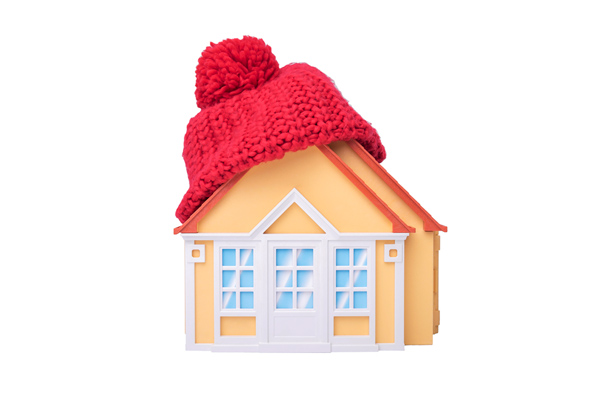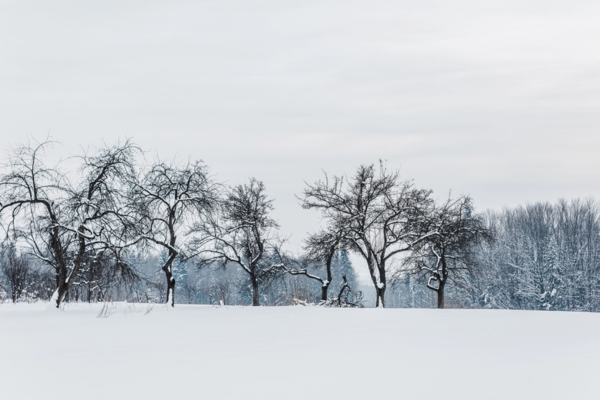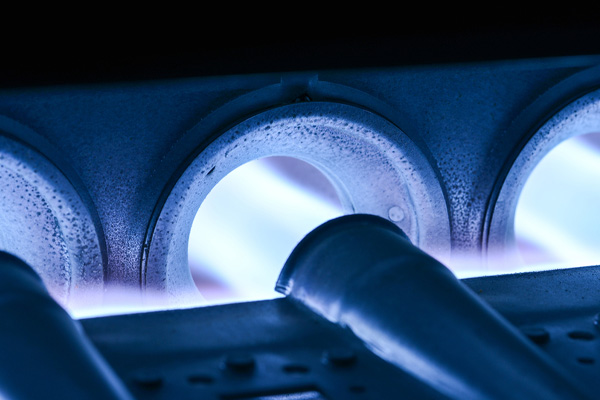8 Furnace Troubleshooting Tips All Homeowners Should Be Aware Of

Few experiences are more unsettling than a furnace breakdown on a bitterly cold winter night. When your heating system fails, even the smallest issue can quickly compromise your home’s warmth, comfort, and safety.
At Hart Home Comfort, we understand how essential a dependable furnace is for every household during the cold months. Homeowners throughout Nassau County, Suffolk County, and Queens, New York, rely on our experienced technicians for precise diagnostics, prompt repairs, and comprehensive maintenance that keep their heating systems performing efficiently and safely.
In this article, we’ll explore the most common furnace problems that occur during winter, offer practical furnace troubleshooting tips homeowners can safely try, and explain when it’s time to call the professionals for expert furnace service.
Keep Cozy All Season: Trust Hart Home Comfort for reliable furnace services that ensure lasting warmth and comfort in your home. Call now to arrange your service appointment!
Why Furnace Issues Often Arise During Winter
Table of Contents
- 1 Why Furnace Issues Often Arise During Winter
- 2 Common Winter Furnace Problems and How to Troubleshoot Them
- 2.1 1. Furnace Not Generating Heat
- 2.2 2. Thermostat Malfunctions
- 2.3 3. Weak or Inconsistent Heating
- 2.4 4. Frequent Furnace Cycling
- 2.5 5. Unusual Furnace Sounds During Operation
- 2.6 6. Furnace Emitting Unusual Odors
- 2.7 7. Furnace Blower Won’t Turn Off
- 2.8 8. Ignition or Pilot Light Malfunctions in Electric Heating Systems
- 3 When to Contact a Professional HVAC Technician in Nassau County, Suffolk County, and Queens, New York
- 4 FAQs About Winter Furnace Problems
- 4.1 Why Does My Furnace Have Trouble Keeping Up on Extremely Cold Days?
- 4.2 Can Closing Vents in Unused Rooms Reduce Energy Costs?
- 4.3 How Can I Avoid Furnace Breakdowns During Winter?
- 4.4 How Do I Know If My Furnace Is Properly Sized for My Home?
- 4.5 What Steps Should I Take If I Smell Gas Around My Furnace?
- 5 Conclusion
- 6 Call Hart Home Comfort for Expert HVAC Services

Frigid temperatures place constant pressure on furnaces, requiring each component to work at full capacity and increasing the chance of wear or malfunction. Cold weather also exposes underlying problems, such as restricted airflow, dirty filters, or older parts that struggle to operate efficiently.
As heating systems run for extended hours, minor issues can quickly escalate into major concerns. Recognizing these factors and learning simple troubleshooting techniques can help homeowners preserve comfort and prevent sudden furnace breakdowns.
Dependable Warmth When It Matters Most: Count on Hart Home Comfort for prompt furnace troubleshooting and repair. Call today to schedule your service!
Common Winter Furnace Problems and How to Troubleshoot Them
When temperatures drop, furnaces may experience several common issues. Fortunately, some can be identified and resolved through basic checks before scheduling a professional visit.
1. Furnace Not Generating Heat

If your furnace isn’t producing heat, the cause may involve thermostat settings, electrical power loss, or ignition system failure.
Examine the thermostat to ensure it’s on the correct setting and replace its batteries if needed. Then, check that the furnace switch and circuit breaker are turned on to eliminate power-related concerns.
If the system still won’t run, look at the pilot light or electronic ignitor, as malfunctions in these components are frequent reasons a furnace fails to start.
2. Thermostat Malfunctions
A faulty thermostat can make your furnace cycle unpredictably or fail to maintain the desired temperature. Common reasons include:
- Damaged or loose wiring
- Worn-out internal parts
- Poor installation placement leading to inaccurate readings
To begin troubleshooting, replace the batteries and reset the thermostat to see if normal function returns. Ensure it isn’t positioned near direct sunlight, drafts, or heat-emitting appliances, as these factors can lead to incorrect temperature readings.
If you’re using a programmable or smart thermostat, verify Wi-Fi connections, app configurations, and recent software updates. Many modern models can even notify you when calibration or maintenance is required.
Should these steps fail to correct the problem, the thermostat may require recalibration or replacement to reestablish accurate communication with your furnace.
Prevent Costly HVAC Repairs: Address minor furnace issues early with help from Hart Home Comfort. Contact us today to schedule your service appointment!
3. Weak or Inconsistent Heating
When certain areas of your home feel warmer than others, several factors could be at play, including:
- Clogged or dirty air filters
- Blocked or closed vents
- Air leaks within the ductwork
Dirty filters restrict airflow, forcing the furnace to work harder while producing less heat. Regularly replacing filters promotes better circulation and efficiency. Make sure all vents are open and free from obstructions such as curtains or furniture so heat can distribute evenly throughout the home.
Duct leaks are another frequent cause of uneven heating, allowing warm air to escape before reaching its intended rooms. Having ductwork professionally sealed or repaired helps maintain consistent warmth and overall system performance.
4. Frequent Furnace Cycling

If your furnace turns on and off too frequently, it may signal an underlying issue such as:
- A clogged air filter
- Improper thermostat settings or placement
- An oversized furnace unit
Restricted airflow from dirty filters can cause the system to overheat and shut down before completing a full cycle. Replacing the filter often restores normal operation and improves efficiency. Check that the thermostat isn’t positioned near vents, appliances, or drafts that could trigger inaccurate temperature readings.
If the furnace continues to short-cycle after these checks, the problem might stem from incorrect system sizing or an internal malfunction that a qualified HVAC technician should assess.
5. Unusual Furnace Sounds During Operation
Strange noises from your furnace often point to mechanical or electrical issues needing attention. A rattling sound may indicate loose panels or parts, while a banging noise can signal ignition or burner problems. High-pitched squeals often suggest trouble with the blower motor or belt.
Start by checking and tightening any loose panels and replacing the air filter, as restricted airflow can sometimes cause or amplify noises. If the sounds continue, it’s best to have a professional technician inspect the furnace to identify and repair any mechanical or ignition-related problems before they worsen.
In modern furnace models, faint humming or clicking noises may come from ECM blower motors or electronic components. A trained expert can determine whether these sounds are part of regular operation or signs of developing mechanical strain.
Cut Energy Costs This Winter: Keep your furnace running efficiently with professional maintenance from Hart Home Comfort. Schedule your service today!
6. Furnace Emitting Unusual Odors

When your furnace gives off unfamiliar smells, identifying the type of odor can help pinpoint the cause. A light burning scent at startup often comes from dust burning away after the unit has been idle and usually fades quickly. Persistent odors, however, frequently signal deeper issues.
Lingering or chemical-like smells may point to overheating electrical components or malfunctioning air-purification attachments, such as UV or ionization systems commonly found in newer HVAC units. Clogged burners can also produce strong odors, while metallic, electrical, or gas-like smells may indicate mechanical problems or potential gas leaks.
While short-term odors are typically harmless, any smell that continues or resembles gas should be treated as a severe warning. Contact a qualified technician immediately to ensure your system’s safety and prevent potential hazards.
7. Furnace Blower Won’t Turn Off
When your furnace blower runs continuously, it can lead to unnecessary energy use and reduced efficiency. The most frequent reason is a thermostat fan setting left on “on” instead of “auto.” Adjusting the setting to “auto” typically allows the blower to cycle properly with the heating system.
If the blower still doesn’t shut off, the issue may stem from a malfunctioning limit switch that isn’t signaling the fan to stop or from wiring complications within the furnace. These situations require professional diagnosis and repair to ensure safe and efficient system operation.
Efficient Heating Starts Here: Keep your home comfortable and your energy bills in check with expert furnace services from Hart Home Comfort. Contact us today!
8. Ignition or Pilot Light Malfunctions in Electric Heating Systems
The furnace may fail to start or sustain heat when ignition or pilot light issues occur. Common causes include electrical malfunctions, drafts, or debris near the burner assembly. Begin by checking the circuit breaker and resetting it if necessary. Look for airflow disruptions around the pilot area that could blow out the flame.
If conditions are safe, relight the pilot light following the manufacturer’s guidelines. However, if the pilot or ignitor continues to go out, it could indicate problems with sensors, wiring, or fuel delivery. In this case, contact a qualified HVAC technician to safely inspect and repair the system, ensuring reliable and efficient operation.
When to Contact a Professional HVAC Technician in Nassau County, Suffolk County, and Queens, New York

Some furnace issues require professional attention for safety and accuracy. Call an expert immediately if your system still won’t heat after basic checks, or you notice short cycling, strange odors, or gas smells. Electrical problems and constant noises also need prompt inspection.
Modern furnaces have sensitive electronics and software that should only be serviced by trained technicians. Certified professionals use diagnostic tools to read error codes, test sensors, and update firmware safely.
Along with handling emergencies, scheduling yearly furnace tune-ups guarantees that components are properly inspected, cleaned, and adjusted. Regular upkeep reduces the likelihood of breakdowns and helps extend the lifespan of your heating system.
Recent updates to safety codes and energy-efficiency standards also make annual furnace inspections necessary to maintain warranty protection in many areas. This is another reason to depend on certified professionals for all your heating service needs.
Your Neighborhood Furnace Specialists: Whether you need maintenance or repairs, Hart Home Comfort delivers dependable solutions. Call now for expert service!
FAQs About Winter Furnace Problems

Why Does My Furnace Have Trouble Keeping Up on Extremely Cold Days?
When temperatures fall below normal, your furnace runs longer to keep your home warm. If insulation is weak or air leaks are present, it may seem like the system isn’t working efficiently. Improving insulation and sealing drafts helps your furnace perform better.
Can Closing Vents in Unused Rooms Reduce Energy Costs?
No. Closing vents might seem like a way to save energy, but it actually disrupts airflow and raises pressure within the ductwork. This strain can cause leaks, uneven heating, and added wear on your furnace. Using a zoning system or a programmable thermostat is a more effective and efficient way to control comfort in different parts of your home.
How Can I Avoid Furnace Breakdowns During Winter?
Consistent professional and homeowner maintenance is the best way to prevent furnace problems. Schedule an annual tune-up to have the system cleaned, inspected, and adjusted before the heating season begins. Between visits, replace filters often, keep vents clear, and watch for unusual sounds or odors. Taking care of minor issues early and ensuring steady airflow helps prevent costly breakdowns during the coldest months.
Reliable Furnace Care You Can Trust: Hart Home Comfort keeps your heating system operating safely and efficiently. Call today to schedule your service!
How Do I Know If My Furnace Is Properly Sized for My Home?
An undersized furnace will operate nonstop and still have trouble heating your space, while an oversized unit tends to short-cycle, turning on and off repeatedly. Both situations cause higher energy use and uneven comfort. A qualified HVAC technician can conduct a Manual J load calculation to determine the ideal system size for your home.
What Steps Should I Take If I Smell Gas Around My Furnace?
If you notice a strong gas smell, evacuate your home immediately and call your gas company or local emergency services before contacting an HVAC technician. Gas leaks are dangerous and need immediate professional attention. Never try to troubleshoot, restart, or relight your furnace until the leak has been safely located and repaired.
Conclusion
Furnace issues are more common in winter due to heavy use, but regular care can prevent most problems. Replacing filters, checking the system, and handling small fixes early keeps everything running smoothly. For ongoing issues, professional service ensures safe and lasting repairs.
Don’t let furnace troubles affect your comfort this winter. Contact {CLIENT} today for expert troubleshooting, dependable repairs, and professional maintenance that keeps your home warm all season.
Stop Furnace Problems Before They Start: Count on Hart Home Comfort for dependable furnace maintenance and care. Call now to schedule your service!
Call Hart Home Comfort for Expert HVAC Services
Hart Home Comfort offers a complete range of heating and cooling solutions throughout Nassau County, Suffolk County, and Queens to keep your home comfortable every season. Our certified technicians specialize in precision tune-ups, prompt repairs, and full system installations or replacements. With extensive experience and attention to detail, we ensure every project meets the highest quality standards.
Whether you need a quick fix or a brand-new HVAC system, Hart Home Comfort provides dependable service at fair, competitive rates. We customize our recommendations to fit your home’s needs and budget, focusing on energy efficiency, indoor comfort, and air quality. Contact us today to book your service and request a professional in-home estimate. Call now!
For any questions about what Hart Home Comfort can do for you, give us a call today. Click here to contact us now or call us at (631) 667-3200 to find out more! Click the link to view our service area.

Related Articles: